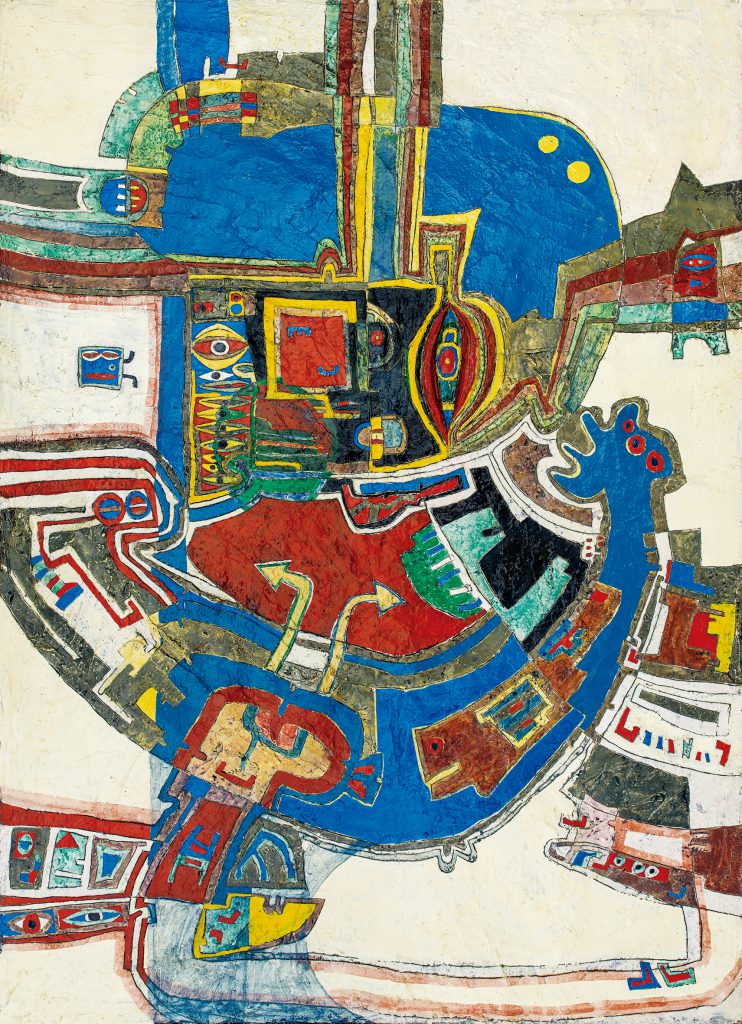
Kwak Duck-jun, Abyss II, 1967, plaster, shell powder, resin, watercolor, acrylic on wood panel, 183 x 133 cm, courtesy of Gallery Hyundai, Seoul
Kwak Duck-jun, Abyss II, 1967, plaster, shell powder, resin, watercolor, acrylic on wood panel, 183 x 133 cm, courtesy of Gallery Hyundai, Seoul

Kwak Duck-Jun was born in Kyoto, Japan, in 1937 after his family left Korea during the Japanese occupation. As a consequence of the San Francisco Peace Treaty following World War II, he was stripped of his Japanese nationality and left with an immigrant status, unable to identify as either Japanese or Korean. Kwak suffered a serious illness as a youth, and the realm of suffering and recovery became part of his imaginative spirit, inward journeys, and subversive conceptualism.
Well known for his experimental performance and video works from the 1970s, his painting series are largely under-recognized and reflect Kwak’s early struggles and frustrations during his hospitalizations. Each painting on display was made between 1964 and 1969 through a special technique for creating ceramic-like textures. Kwak colored, coated with wood glue, and scraped with a nail the thick, rugged surface of plaster and shell powder on wood panels to produce spontaneous drawings of liberated curves and organic forms. Unconcerned with western techniques or painting on canvas, the paintings’ use of shell powder and the ceramic-like surfaces of the works evoke his education in Japanese painting.
In Smile of the Hypocrite 667 (1967) and Journey series (1967), the freely flowing curves of the spontaneously drawn lines on the glazed surface and the numerous ferocious eyes among the shapes recall shamanistic spells or pictographs. At a distance, the organic forms of the paintings often read as a jumble of eccentric images, only to cohere into a face or human body. Masked faces, multiple eyes, and maze-like patterns haunt the panels. These symbols derive from his spiritual willpower to overcome physical trauma, dilemmas of identity, and discrimination, evincing a sardonic wit and palimpsestic vision in Kwak’s approach.
Kwak Duck-jun, Abyss II, 1967, plaster, shell powder, resin, watercolor, acrylic on wood panel, 183 x 133 cm, courtesy of Gallery Hyundai, Seoul